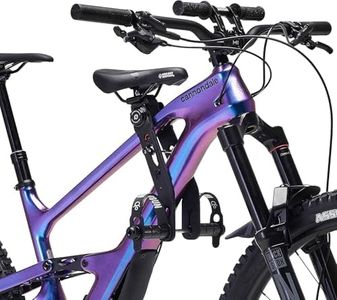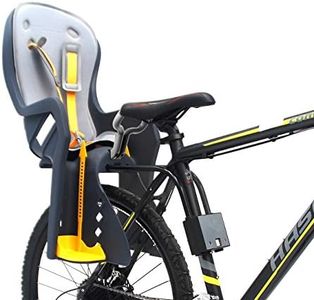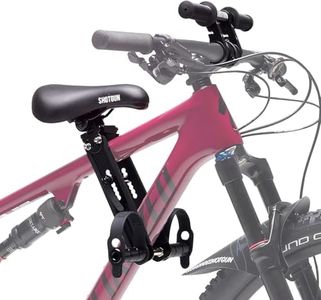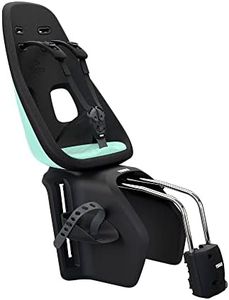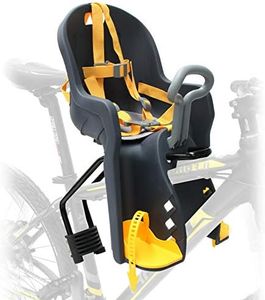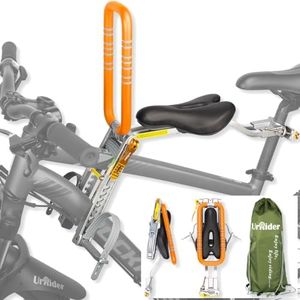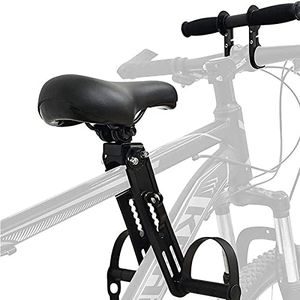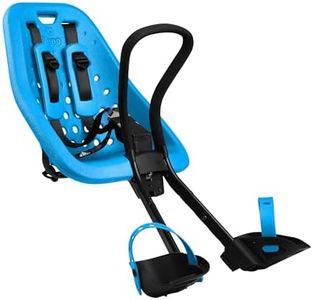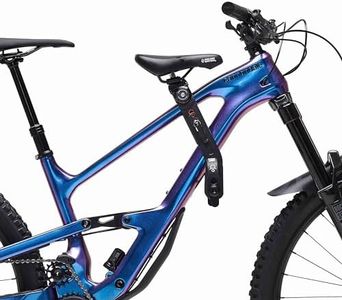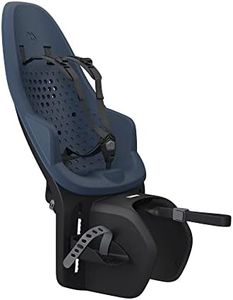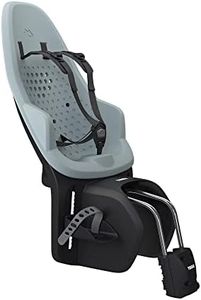We Use CookiesWe use cookies to enhance the security, performance,
functionality and for analytical and promotional activities. By continuing to browse this site you
are agreeing to our privacy policy
10 Best Child Seat For Bikes
From leading brands and best sellers available on the web.Buying Guide for the Best Child Seat For Bikes
Choosing a child seat for bikes is an important decision for any parent or guardian who wants to bring their child along for rides in a safe and comfortable way. Since options vary widely in style, safety, and comfort, it’s essential to match the seat’s features to your riding habits, your child’s age and size, and the type of bike you have. By understanding the key specifications, you’ll be able to pick a seat that meets your needs and keeps your child safe while you enjoy cycling together.Mounting StyleMounting style refers to how the child seat attaches to your bike and it’s essential because it affects both safety and compatibility. The main types are rear-mounted (attached behind the adult seat) and front-mounted (attached in front of the adult, typically between the handlebars and the saddle). Rear-mounted seats tend to support older or larger children and provide more stability, while front-mounted seats keep younger children close and let them enjoy the view, but they’re usually for lighter kids. To choose the right mounting style, consider your child’s age and weight, your bike’s frame design, and where you feel most comfortable having your child seated.
Weight and Age LimitThis specification tells you the minimum and maximum weight or age a seat is designed to safely carry. It’s important because overloading the seat can be unsafe, while putting a child who’s too small offers inadequate support. Weight limits vary: some seats are meant for toddlers up to about 15 kg (33 lbs), others can handle children up to about 22 kg (48 lbs) or more. Always check both your child’s current size and growth potential to ensure safety and longevity of use. Remember, age is just a guide—weight is the principal safety factor.
Harness SystemThe harness system is what keeps your child securely strapped into the seat. Its quality and design are crucial for safety during rides, especially on bumpy terrain. Three-point and five-point harnesses are most common, with five-point versions offering extra security by restraining both shoulders, the waist, and between the legs. If you plan to ride on uneven roads or at higher speeds, prioritize seats with five-point harnesses. Adjustability and comfort padding also matter—make sure it’s easy to tighten and loosen so you can secure your child snuggly but comfortably.
Footrests and StrapsFootrests support your child’s legs and keep feet away from the bike’s moving parts, while straps keep their feet securely in place. This is important because dangling legs can get fatigued or, even worse, caught in the spokes. Adjustable footrests let you modify the seat as your child grows, and foot straps prevent accidental movement. Choose a seat with both adjustable and easily secured footrests and straps, especially if your child is active or tends to move a lot during rides.
Seat Padding and ComfortSeat padding and the overall comfort level determine how enjoyable and sustainable riding will be for your child. This feature is vital for longer rides or if your child is prone to fussiness. More padding provides better shock absorption and support, while contoured seat shapes can help with posture. When assessing padding, consider both material quality and ergonomics—try to find the right balance between cushiness and support, based on your planned ride lengths and your child’s preferences.
Safety Standards and ReflectorsSafety standards indicate whether a seat meets established regulations for secure transport. This is important as it ensures the seat is designed and manufactured with safety in mind. Look for certifications relevant in your region (like EN14344 in Europe). Extra features such as reflectors or high-visibility colors improve your bike’s visibility on the road. Prioritize seats that clearly state they meet or exceed safety standards, and consider additional visibility features if you’ll be riding in urban areas or low-light conditions.
